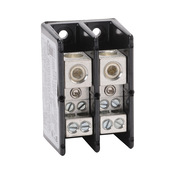Thanks for that.
Please let me know if you have any questions or concerns with your build.
Part sources? More info? Design change? Safety? NEC concerns? Anything?
(Just a little side info about this old man.)
I went to trade school after high school to learn the electricians trade. I got a job with IBM Corp as a technician when I was 19 years old in 1958 when I finished trade school. I retired from them at 65 years old when I gave it all up. I spent many years growing within the company. It was not long when I joined the management team and after a while spent a few years on assignment traveling the world. Including 4 years based in Germany in support of our nation.
I know a little, Scheme a lot & have fun keeping my mind challenged.
By the way, I have stayed current with the National Electrical Code over all of these years.
So, If you need any info on your build, Please ask.
Wishing you the absolute best.
P-J
What a great story and resume!
I do have a few more things I'd like to integrate into the design of the system but
I don't want to put you out. Most of these changes should be simple enough to just wing without a schematic if you don't want to be bothered with it. I'm starting to feel bad for the amount of work you've put in. You say you have fun keeping your mind challenged so I suppose I'll just put them out there for you to decide if you want to work on them or not.
Please do not feel obligated, you have already put in more work than I even feel comfortable asking of someone. It's a lot of effort and I know I'm over-reaching.
With that said, here they are:
It would probably be a good idea to add a side mount Liquid Level Control Switch to each tank to protect the elements by not allowing power until after the elements have been submersed. I could be wrong but it looks like the float switches could be wired in series from output #7 on the PIDs before it is distributed to the 4 SSRs for each tank.
It would also be convenient to add a Liquid Level Resistance Pump-Down Sensor to one of the pump circuits for vorlaufing. We could replace the On/Off with a 3 position On/Off/On for Manual/off/Auto. I found this one used for $32, the unit is DIN mountable.
http://www.kimcontrols.com/item/LNC00DLA441
Perhaps the pump circuit should be on it's own designated breaker? The March pump AC-5SSB-MD has a 2.2A load and in some cases two pumps will be in use at the same time.
http://www.pumpbiz.com/shopping_product_detail.asp?pid=74080#tabs
Lastly (maybe not), a timer with a buzzer and reset switch. The beer timer from Auberins seems like a good choice.
http://www.auberins.com/index.php?main_page=product_info&cPath=16&products_id=356
I still have concerns about having more then one supply feed entering a single panel. Does NEC code allow for this? Either way I'd like to separate the controls panel from the power panel(s).
Thank you so very much. I truly wish you the very best as well.
Regards,
Charles
Feel free to email me if you prefer:
[email protected]




![Craft A Brew - Safale BE-256 Yeast - Fermentis - Belgian Ale Dry Yeast - For Belgian & Strong Ales - Ingredients for Home Brewing - Beer Making Supplies - [3 Pack]](https://m.media-amazon.com/images/I/51bcKEwQmWL._SL500_.jpg)
























































